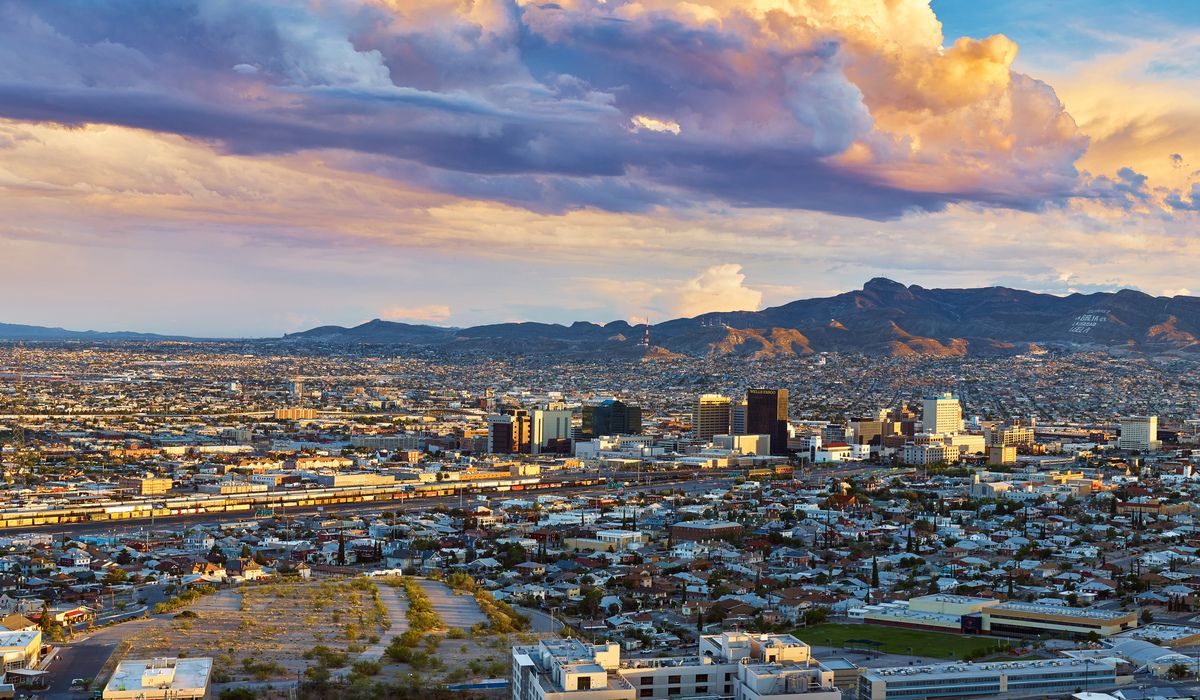Large-scale solar and batteries are coming to many regions of the United States, and particularly the West. Areas like West Texas and New Mexico offer truly awesome natural solar potential, and with the latest in cost reductions, the prices for large-scale solar can’t be beat.
On Wednesday El Paso Electric (EPE) announced that it has selected 200 MW of large-scale solar plants and 100 MW of batteries to help meet demand in the 2022-2023 summer peak through a request for proposals issued in June of last year. Additionally the company plans to build a huge gas “peaker” – a 226 MW combustion turbine – at one of its existing power plants.
And this may not be all; EPE has also stated that it expects to pursue the purchase of 50-150 MW of wind and solar power for the purposes of “fuel diversity and cost savings”.
At the time of writing this article no additional information had been made available on EPE’s web site or through its regulatory filings about the capacity or location of the individual solar and battery projects that have been selected. Additionally, all projects will need to go through the execution of contracts, get permits, and receive the blessing of state regulators before they can be built.
No country for old power plants
That large-scale solar will provide savings for EPE’s customers over other resources is not a new conclusion. In its Integrated Resource Plan (IRP) filed in September, EPE estimated its most cost-effective portfolio would involve adding 350 MW of solar in 2022, as well as 15 MW of battery storage.
This is despite a very pessimistic evaluation of the contribution of solar to its capacity needs, with EPE valuing large-scale solar’s contribution to its peak at only 25% of the rated capacity. This is far less than the estimates of Texas grid operator ERCOT, however it should also be noted that EPE already has more solar in its system than ERCOT as a whole, and in its IRP the utility notes that the contribution of more solar is moving its system peak to the evening.
And in any case EPE still needs more energy and capacity, as it is expecting the retirement of 578 MW of “net summer capacity” over the next 20 years, including 260 MW of gas-fired power at four units at its Newman and Rio Grande Power Stations in 2022. In the world of power plants these four are ancient, with all four put online between 1957 and 1963.
Slow-walking the transition?
EPE is planning to install another 226 MW gas-fired combustion turbine (CT) at the Newman plant, however such CT are faster-ramping and less efficient than combined cycle gas plants, and as such typically run less often and used for meeting peak demand. This will add to the nearly 1.2 GW of gas that the utility will still in its service area after the four units retire.
The utility’s moves towards solar and batteries while still building gas plants put it in the middle of current trends in the power industry. 2018 is expected to be the first time in the last four years where a larger capacity of natural gas plants will come online compared to the combination of wind and solar, due to a massive build-out of gas plants.
However, most of this gas is coming online in the PJM Interconnection region and other areas east of the Mississippi, whereas Western utilities are more often abandoning fossil fuels including gas and moving straight to renewables and batteries. As such, like many Eastern utilities, EPE appears to be slow-walking the inevitable transition to renewable energy.
Additionally, like other utilities EPE has worked hard to claw back revenue from its customers who install solar and/or kill the rooftop solar market in its service area. In late 2017 Texas regulators allowed the utility to impose a whopping $30 per month minimum bill for customers who install PV arrays, but customers who already have solar will be spared this fee hike.
This content is protected by copyright and may not be reused. If you want to cooperate with us and would like to reuse some of our content, please contact: editors@pv-magazine.com.









O live up here at the top of Texas ,practically under the wind turbines,and recieve no break on our monthly bill! As a matter of fact xcel has thought of a new way to extort the public ,by charging a non-reoccurring deposit that has no service to offer .$466 they put on my bill ,the reps i spoke with informed me of a new policy that if I were to do a bank draft that I could get money back in 12 months of i was not late. This makes no sense that just slid this charge in without notice just think about them hitting my account with a $700 bill would wipe me out of my account ! I would be in ruin and no electricity to boot.Now they play dumb when I ask about the renewable energy certificates. I believe this is exstortion,charging a fee and not providing a service.and can shut off the necessity we all need.that’s a bully when you have no choices.I think about our elders whom built this country and living on a fixed income,these people will go without food and medicen to pay to have their lights on .how is this huge empire “XCEL” energy also southwest utility live with their self.this is the industry that is changing our future.Warren Buffett says this will be the largest movement of wealth in history. “DEREGULATED ENERGY” share the wealth xcel!
Well, to be clear, this article is about El Paso Electric, not Xcel. As far as the deposits that Xcel is requiring and what they are charging, I have no knowledge of this and this matter is pretty much outside of what we report on as a publication that covers the U.S. solar market.